
- 1Paints – Basic Facts and Components Used in PaintsThe exact composition of a particular paint is often complex and proprietary. In general, however, most paint contains the following:
-
Binder The paint binder (or resin) is the solid material that forms the bulk of the paint film. It is generally a tough, amorphous polymeric material that gives the paint most of its thermal, mechanical, and weathering properties.
-
Solvents It adjusts the viscosity of the paint to suit the method of application. Turpentine is generally used as a thinner in oil paints. In emulsion paints, water is used as a thinner.
-
Pigments Paint pigments are small, hard particles that come in a wide variety of shapes. Their principle functions are to cover the substrate since most binders, by themselves, are more or less translucent. To provide color as required by the appearance of the finished product.
-
Additives Additives are modifiers added to paint, usually in small quantities, to achieve special effects. They modify the properties of either the wet film or the dried paint and can affect flexibility, color fastness, gloss, solvent resistance,etc.
Related Studies
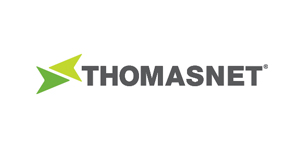
General Industrial Paint Components
ThomasNet.com
www.thomasnet.com Industrial paint, as used to protect metal, wood, and a wide range of other materials, possesses a variety of traits that can be manipulated to provide application-specific coverage. Of course, these characteristics depend in a large part upon the ingredients of the paint and the performance specifications of the selected application… read more
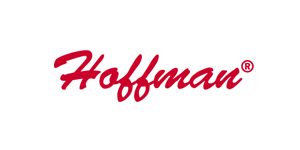
Materials and Paint Finishes Paint Properties and Characteristics
Hoffman
www.hoffmanonline.com Selecting the best finish for your enclosure is more than a simple protection issue. Factors such as gloss or sheen, texture, cleanability, color retention, and recoatability should also be considered.The following provides information on some of the basics of paint formulations and painting processes… read more
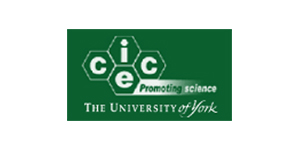
Paints
The Essential Chemical Industry
www.essentialchemicalindustry.org Paint is used to decorate, protect and prolong the life of natural and synthetic materials, and acts as a barrier against environmental conditions.Paints may be broadly classified into Decorative paints, applied on site to decorate and protect buildings and other objects, and Industrial coatings which are applied in factories to finish manufactured goods such as cars… read more -
- 2Manufacturing Method of PaintsIncorporation of pigments and extenders into the binder resin to obtain a product smooth & homogeneous. Dispersed in a mixture of solvent which remains liquid throughout the formulation of the film. The first step in making paint involves mixing the pigment with resin, solvents and additives to form a paste. Then paste to be routed into a bead mill. A large cylinder that agitates tiny particles making them smaller and dispersing them throughout the mixture. This is done in high speed dispersion tank which is circular. There is a rotating shaft with blades which agitates the mixture and blends the pigments in solvent. Adjustment of viscosity.
Related Studies
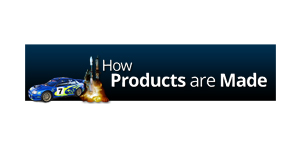
Paint
How Products are Made
www.madehow.com Paint is a term used to describe a number of substances that consist of a pigment suspended in a liquid or paste vehicle such as oil or water. With a brush, a roller, or a spray gun, paint is applied in a thin coat to various surfaces such as wood, metal, or stone. Although its primary purpose is to protect the surface to which it is applied, paint also provides decoration… read more - 3Application Methods of Paints on Metals (Pre-painting and Post Painting)
Pre Painting
Coil coating is the most advanced technique for applying organic coating (liquid or film) to sheet metal in a continuous process. Since its inception in the early 60’s the European coil coating industry has produced over 8 billion sq. m., of precoated metals and its products are firmly established in markets such as construction, automotive, domestic appliance, heating and ventilation, packaging, office furniture, shelving, caravans, lighting etc.Post Painting
Post painting means, painting a metal surface after producing components. Example: Automotive, Appliances using powder coatingRelated Studies
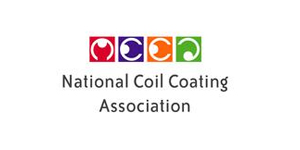
The Process
National Coil Coating Association
www.coilcoating.org Coil coating is a continuous, automated process for coating metal before fabrication into end products. The steel or aluminum substrate is delivered in coil form from the rolling mills. The metal coil is positioned at the beginning of the coating line, and in one continuous process, the coil is unwound, pre-cleaned, pre-treated, pre-primed, and prepainted before being recoiled on the other end and packaged for shipment… read more
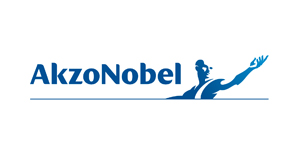
About Coil Coatings
AkzoNobel
www.akzonobel.com Coil coating is a continuous and highly automated process for coating metal before fabrication. In one continuous process, a coil of metal, up to 72 inches wide moving up to 700 feet per minute, is unwound and both the top and bottom sides are cleaned, chemically treated, primed, oven cured, top coated, oven cured again, rewound and packaged for shipment…. read more - 4What is a Prepainted Steel Product
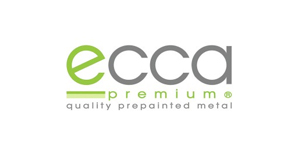
Choosing the Right Prepainted Metal Product
Europia Coil Coating Association
www.prepaintedmetal.eu Prepainted metal is a high quality product manufactured under strict quality control in the coil coating process. The main substrates for prepainted metal are steel and aluminium strip and these are usually coated with a liquid paint by rollercoating, although sometimes a preformed film is laminated to the surface and occasionally a powder-paint is applied in coil coating…. read more

About Coil Coatings
AkzoNobel
www.akzonobel.com Coil coating is a continuous and highly automated process for coating metal before fabrication. In one continuous process, a coil of metal, up to 72 inches wide moving up to 700 feet per minute, is unwound and both the top and bottom sides are cleaned, chemically treated, primed, oven cured, top coated, oven cured again, rewound and packaged for shipment… read more - 5Overview of Coil Coating ProcessBare coils of metal are placed on an unwinder or decoiler where the metal is observed for defects. The metal is then cleaned and chemically treated in preparation for painting. Brushes can be used to physically remove contaminants from the sheet, or the metal may be abraded by flap sanders to further enhance the surface. Pretreatments are used to provide the bond between the metal and the coating, in addition to adding any corrosion resistance. The type of chemical treatment varies with the type of metal being used. After drying, the strip enters a coating room for a coat of primer usually on both sides of the sheet. The pickup roll transfers the coating liquid from the pan to the applicator roll. The liquid is then pumped into the pan, and then overflows back to the supply reservoir, where it is remixed and filtered. The paint sheet then enters an oven in which the coating is cured at high temperatures for 15 to 30 seconds. The strip exits the oven and is cooled with air and water. A majority of specifications call for two coats (primer and top coat) on each side of the sheet, requiring a pass through a second coater room and oven. The fully painted sheet then exits the second oven and is cooled before inspection and rewind.
- 6Advantages of Pre-PaintingOptimum balance of properties. Guaranteed uniform Surface finish. Enhanced corrosion resistance of substrate. A durable surface which minimizes handling damage. A material which can precisely and consistently meet design specifications in terms of coating thickness, appearance and overall performance. Expenditure on effluent disposal eliminated. Efficient, Energy Saving, Environmental Friendly, Economical. Prepainted metal can be fabricated, formed, drilled, riveted, embossed & bent into required shape and size. Prepainted metal stands against aggressive environmental weathering conditions.
Related Studies

What is Coil Coating
Europia Coil Coating Association
www.prepaintedmetal.eu Coil coating is the most advanced technique for applying organic coating (liquid or film) to sheet metal in a continuous process. Since its inception in the early 60’s the European coil coating industry has produced over 8 billion sq. m., of pre-coated metals and its products are firmly established in markets such as construction, automotive, domestic appliance, heating and ventilation, packaging, office furniture, shelving, caravans, lighting etc… read more - 7Applications of Pre-painted Galvanized Steel SheetsPre-painted galvanized steel sheets can be use on roofing , walling , cladding , false ceiling, appliances, rolling shutter doors, fencing, cold boxes, pre-engineering buildings, sign boards, partitions, office furniture, drums, insulations etc.
- 8International Standards Related to Pre-painted Steel
ASTM A755/A755M – 15
Standard Specification for Steel Sheet, Metallic Coated by the Hot-Dip Process and Prepainted by the Coil-Coating Process for Exterior Exposed Building Products. EN 10169 – Continuously organic coated (coil coated) steel flat products. General information (definitions, materials, tolerances, test methods) JIS 3312 – Pre-painted Hot Dip Zinc coated Steel sheets and coils Pre-painted steel Test standards (EN13523)Related Studies

Test Method
Europia Coil Coating Association
www.prepaintedmetal.eu This method defines the procedure of determining the thickness of an organic coating on metallic substrate using electrical measurement devices… read more
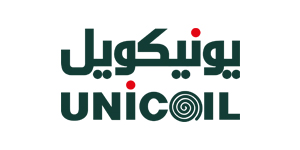
Table of NCCA, ASTM, and ISO Test Methods Applicable to Prepainted Metal
Universal Metal Coating Company
www.unicoil.com.sa read more - 9Performance Criterion for Paints on Metals
-
Formability
-
Durability
-
Robustness
-
Corrosion protection
-
Visual appearance
-
Cost
-
And any special requirements such as chemical resistance
Related Studies

Choosing the Right Prepainted Metal Product
Europia Coil Coating Association
www.prepaintedmetal.eu Prepainted metal is a high quality product manufactured under strict quality control in the coil coating process. The main substrates for prepainted metal are steel and aluminium strip and these are usually coated with a liquid paint by rollercoating, although sometimes a preformed film is laminated to the surface and occasionally a powder-paint is applied in coil coating…. read more -
- 10Lead Usage in Paints and its Purpose.Lead paint is any paint that relies on lead compounds for its colour. White lead, or lead (II) carbonate (PbCO3), is a typical example, and was once widely used to paint wooden surfaces in homes. Other lead compounds, like vivid yellow lead chromate (PbCrO4), were used as coloured pigments. As well as giving the paint its tint, lead pigments are highly opaque, so that a relatively small amount of the compound can cover a large area. White lead is very insoluble in water, making the paint highly water-resistant with a durable, washable finish. Lead carbonate can also neutralise the acidic decomposition products of some of the oils that make up the paint, so the coating stays tough, yet flexible and crack-resistant, for longer.
Related Studies
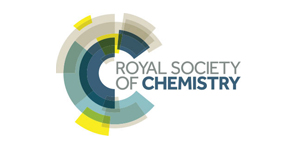
Why Use Lead in Paint?
Royal Society of Chemistry
www.rsc.org Mattel, the world’s biggest toy maker, has recalled millions of toys that were coated with lead paint. Lead’s poisonous properties have been known for thousands of years, so why was lead ever added to paint, and why is lead paint still being made… read more - 11Alternatives to Lead in Paints
Lead-free Paints :
Some paints are now manufactured without lead. The most widely used lead substitute is titanium dioxide, also used for coloring food. Organic pigments can also be alternatives. For quicker drying and gloss, zirconium can be used. The barium-zinc-sulfur combination replaces white lead. But the substitutes are costlier than lead. Therefore, the manufacturers prefer to use lead in paints. In India, Nerolac has launched its lead-free paints. Now the company does not add any lead or other heavy metals in its manufacturing process (see logo), claims nerolac.com. ICI Dulux, too, does not use lead in its paints. Around the image of a green tree its label states: No added lead, mercury, chromium compounds. Asian Paints and Berger Paints also make similar claim. However, lead contamination, lower than limits set by various organizations, may occur through ingredients.Related Studies

Lead-free Paints
Environmental Information System
www.cercenvis.nic.in If you are thinking of a fresh coat of paint for your house this festive season, hold on; the coat you have been applying for years contains lead — one of the most toxic elements to humans. … read more
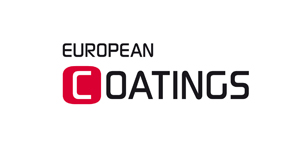
Lead is Dead
European Coatings
www.european-coatings.com Market demands and regulatory requirements have placed pressure on coatings formulators and chemists to find alternatives to lead chromate pigments. This middle-yellow colour space can be addressed by a number of different pigmentations that are a balance of performance and cost for a given colour… read more
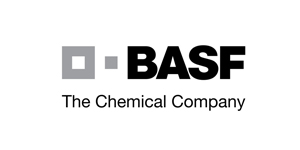
The New Paliotan® pigments
BASF The Chemical Company
www.basf.com These are the advantages of the Paliotan® hybrid pigments based on inorganic and organic pigments. Properties which make Paliotan® pigments ideal for industrial applications such as agriculture /construction/earthmoving, powder and coil coating for bright and hiding shades. This makes it easy to formulate very innovative and environmentally friendly coatings. As you see – Paliotan® is really more than a simple lead chromate replacement… read more